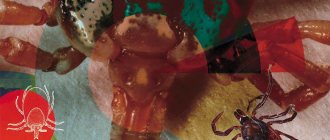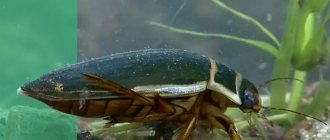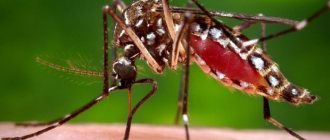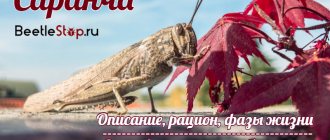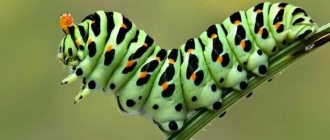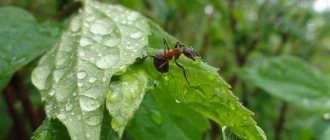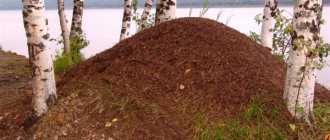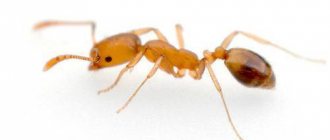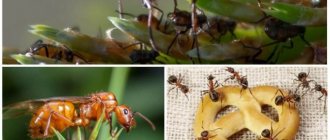Development and reproduction of ants
- Fact:
The female is fertilized once; she will use this seminal fluid throughout her life. - Fact 2:
Until the first population of worker ants appears, the queen does not eat anything; she feeds the larvae with the contents of her fatty glands, from which she feeds herself. - Fact 3:
The body of a worker ant has a durable chitinous shell and three distinct sections: head, belly, and sternum. - Fact 4:
The queen queen lives the longest, for two decades. But there were also cases of longer life expectancy. The recorded maximum is 28 years.
In every ant colony there is a clear hierarchy. One can only envy such a structured and organized community. Each family member has his own status, his own role, his own responsibilities and even a diet according to his needs.
Features of the ant family
An ant family is a highly organized community, which includes sexually mature adults (females and males), working individuals (sterile females) and offspring at different stages of development (eggs, larvae, pupae).
The number of individuals in a family can vary from several tens to millions. There are usually several reproductive females in a family (but there may be one), but working individuals are the most numerous part of the community. In a community, there is a division of labor, relationships between individuals, and established mechanisms for solving various problems. All family members act as a single cohesive organism.
Ant queen
The reproductive female (also called the queen or queen) is responsible for reproduction. Outwardly, it is similar to a working individual, but differs in its large size and some features of the body structure, in particular, the presence of wings. The queen mates with the male only once, receiving in the process a supply of seminal fluid, which she then uses throughout her life. After fertilization, the queen bites off her wings, and then either remains in the anthill, or, which happens much more often, leaves it and organizes a new family.
Ant queen
Males
The main role of male ants is to fertilize young queens. Males do not have a sexual organ in the usual sense, but they do have a spermatic duct, from which, during the mating process, sperm enters the female’s spermatic receptacle. Most males are winged and mating occurs after the so-called “nuptial summer.” But there are also wingless insects that remain in the nest and fight with each other for the available young females.
Worker ants
It may seem that the queen is the head of the family, but this is not so. Working individuals play a decisive role in all processes occurring in the anthill. They do not reproduce, but they decide the fate of the females; for example, they can destroy the queen, whose fertility has decreased. In addition, worker ants control the reproduction of offspring (they destroy excess larvae, change the feeding regime). A worker ant is a female with an underdeveloped reproductive system.
In the ant family there is a clear division into castes. Each worker has its own responsibilities. Some get food, others build a nest, others look after the offspring, others are responsible for the cleanliness and order in the anthill, etc.
Sexual characteristics
Development by gender has the following mechanism: fertilized eggs are future females, and unfertilized eggs are males. Having received seminal fluid once and for all, the uterus consumes it in portions, so not all eggs are fertilized, but only partially .
Eggs that do not receive a male chromosome have only the maternal chromosome set and in the future they will be guaranteed to be males. From fertilized eggs, there are two options for the development of females: either a female for further reproduction, or a soldier ant. The final result depends on diet and care.
Ways to create a family
Ants have several options for creating a family, which differ quite significantly from each other.
Independent
When the time of mating summer comes, young females and winged males get out of the nests, climb to nearby hills (blades of grass, fences, walls of buildings, bushes and trees) and take off. Most often, males fly first, and females follow them, attracted by the smell of secreted pheromones. Mating occurs directly in the air or on the ground.
After mating, the male dies, and the female looks for a place for a new nest. Having found it, she forms a small closed chamber in the ground where she lays her eggs. The queen feeds the emerging larvae with secretions of the salivary glands, and when they turn into working individuals, all concerns about building an anthill, obtaining food and feeding the larvae pass to them. And the queen can only reproduce regularly.
Temporary social parasitism
Temporary social parasitism is common in many species. Females cannot start a family on their own; they need the help of working individuals of another species. Therefore, the fertilized female finds a nest in which there is no queen and settles in it. It also happens that there is a queen in the anthill, but the new queen turns out to be more attractive to the ants and is allowed to kill the queen and take her place.
Worker ants
The female begins to reproduce. At first, insects of both species coexist in the anthill, but gradually there are more and more individuals of the new species and finally, they completely occupy the anthill and rebuild it to suit their needs.
Division
Another option for creating a new family is separation from the larger community. The family can split in half, or only a young fertilized female and a small part of the workers move to a new nest (most often built not far from the main one).
Signal to open
Interestingly, ants will not eat a food larva without a reason.
. In order for this to happen, the larva itself must signal that it is ready for use. A small drop of food liquid appears on the surface of the larva. And immediately other ants surround her and begin to squeeze and suck out the nutrient fluid. After a quarter of an hour, instead of a large larva, only a wrinkled shell remains.
Therefore, you should not be afraid of the appearance of an unnaturally large larva in a formicarium - this is not a sign of illness or some kind of abnormality, but a completely natural part of the life of an anthill.
Fertilization and reproduction of ants
As a rule, in nature, ants reproduce once a year. In most species, females mate with only one male, but there are varieties whose females can mate with several males (the number can reach 10 - 15). The female stores the resulting sperm throughout her life, spending it evenly, since her only task is to take care of the preservation of the family and lay eggs.
In some varieties, same-sex reproduction is possible, in which the eggs are not fertilized. In the small fire ant, reproduction occurs by natural cloning.
Decor objects
A trivial example. If you add an epoxy resin figurine to the arena, an ant may get a chemical burn if it walks over it. This happens because the hardener is not safe for human skin, but it creates goosebumps and the like, so I recommend ordering from trusted suppliers who will answer any question.
I once read that if you mix plaster and PVA glue, ammonia will be released, which is also poison. But it’s easy to make a craft out of more nasty stuff.
Let's move on... Plaster. Pure plaster is safe, but it is also rare. Much more often, ingredients are added to gypsum to improve its properties. The properties of gypsum are improved, but it is useful for construction or sculpting. At the same time, gypsum or alabaster becomes unsuitable for ants to live in.
Stages of development
The development of ants occurs with complete transformation. Their life cycle consists of 4 stages:
- egg;
- larva;
- chrysalis;
- imago.
Each stage of development takes a certain time, and the insect undergoes serious external and internal changes.
Egg
Throughout her life, the queen lays eggs. The ant egg is small (about 1 mm), elongated, white or yellowish in color. Typically, eggs are stored in small “packages” in a specially designated place inside the anthill, and they are looked after by workers.
Larva
After an incubation period, the duration of which depends on the species of ants, larvae emerge from the eggs. They look like small light worms, they move little, but actively feed. The workers take care of the ant larvae and feed them. The food most often becomes liquid food, which is regurgitated by an adult ant. But as they grow older, the larvae can also eat solid food, for example, seeds or parts of insects that workers bring.
Stages of development
As the larvae grow, they molt several times, depending on the variety, this happens 3 to 5 times. When the time comes to pupate, the larva stops eating and excretes excrement, which it did not do before.
Doll
Before turning into a pupa, some larvae weave a cocoon, while some species do without it. For normal development and transformation into an adult ant, the pupa must be at a certain temperature all the time. Workers transfer pupae to chambers with the most suitable conditions. When the pupal stage is completed, the workers help the young insect get out of the cocoon, since the ant cannot do this on its own.
Imago
The developmental pattern of the ant ends at the imago stage. Immediately after the ant emerges from the cocoon, it is much lighter than its relatives, but quite quickly (within 2–4 days) the insect darkens and becomes indistinguishable from other members of the family.
An adult who, having been born, immediately begins its duties. At first, all the young ants take care of the queen and brood. Later they work inside the nest, building and arranging it. Some of the young become defenders of the anthill or search for and deliver food.
Fatal mistakes
Until now we have talked about non-critical problems.
The loss of a few ants will not have any effect on a colony of 200 animals, however, there are systematic problems during which the colony dies. It is important to immediately identify and stop critical factors.
Think about the moment at which the corpses appeared: a new decorative object, a food insect, a rearrangement. Look for connections.
This table is a gift to you. Enjoy it for your health. However, read the article to the end to become more aware of the problem.
| Cause | Sign | What to do |
| Nutrition | After eating, corpses appear | Study the diet of your species. Experiment with different manufacturers. |
| Toxic decor objects | After new objects bodies appeared | We remove everything right away |
| Temperature and humidity | Deformations of the formicarium, Condensation on the walls of the truss. Ants are at the drinking bowl or gnawing on plaster. Juveniles have no legs or are difficult to bend | Make a plaster insert. Monitor the moisture and color of the plaster. Install a drinking bowl. Install a hygrometer. Remove from direct sunlight |
| Ticks | White drops around the ants. Ants walk slower. | We reduce humidity and temperature. We remove garbage. We plant the predatory hypoaspis mite. |
| Rotting garbage | The rooms are filled with garbage. | We plant a small colony in a test tube or add springtails. |
| Internal parasite | The queen does not lay eggs. Then it lays a huge egg, which is the cocoon of a parasitic fly. | We are trying to fatten the queen, but most likely we are buying a new colony. You can try to place one with the other, but a successful outcome is unlikely. |
The content errors are:
- Incorrect formicarium;
- Improper conditions of detention.
There are plenty of reasons for ant pestilence: overheating, dirt, rotting garbage, hunger, poor nutrition, humidity, parasites, injuries, toxic materials.
A formicarium is a home and a fortress, but if it is made of toxic materials, the ants will die.
Lifespan
The lifespan of an ant is determined by its gender and position in the family:
- males live for several weeks;
- working individuals - from several months to 3 (less often 5) years;
- the queen can live 15–20 years (a record of 28 years was recorded for a queen living in laboratory conditions).
Lifespan is affected by living conditions, weather conditions, and the activity of natural enemies. Under natural conditions, the population of an anthill is almost completely renewed throughout the year (with the exception of the queen).
Mold
Water is the basis of life, including ants. The main risk is that if you moisten too much, mold or parasites will appear. Try not to flood; if the truss is covered with condensation and the plaster is not able to absorb all the liquid, then next time add less water.
The formicarium was given away for rescue. It smelled musty inside. Even my hands itched from working with it. First of all, I pulled out the queen and several dozen ants. I threw out all the contents. Formic was disassembled and washed.
The problem is solved by reducing humidity and regularly removing debris from the arena; if mold appears, then it’s time to clean the formicarium. They also add springtails to the ants, which eat mold, nests of parasites and the garbage itself. It will be creepy near the ant dump.
Some interesting facts
- Some of the species of these arthropods can remain under water without access to air for 4 days, as if in a preserved state. Once removed from the liquid, they come to life again and continue to exist.
- The ant's legs (there are 6 of them, and each has 3 joints) are very strong. They seem to be designed by nature for heavy work and moving loads. By the way, if this insect were as tall as humans, then, in proportion to its physical characteristics, it could run at speeds of up to 60 kilometers per hour and lift loads of one and a half tons!
- Ants, according to some researchers, have a collective intelligence, and the total number of their brain cells (for a single anthill) is comparable to the number of the same cells in humans.


